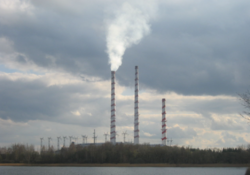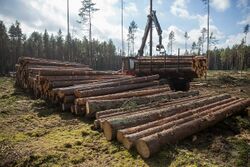Baltica: Difference between revisions
No edit summary |
No edit summary |
||
| Line 21: | Line 21: | ||
|map_caption2 = <!--Caption to place below second map--> | |map_caption2 = <!--Caption to place below second map--> | ||
|capital = Goja <!--Name of country/territory's capital, wikilinked if link exists--> | |capital = Goja <!--Name of country/territory's capital, wikilinked if link exists--> | ||
|largest_city = Goja, Kretia | |largest_city = Goja, Kauni, Kretia <!--Name of country/territory's largest city. Use "capital" (without quotemarks) if it's the capital.--> | ||
|official_languages = <!--Languages recognised in legislation, constitution, etc--> | |official_languages = <!--Languages recognised in legislation, constitution, etc--> | ||
|national_languages = <!--Country/territory-wide languages recognised but not necessarily in country/territory-wide law, etc--> | |national_languages = <!--Country/territory-wide languages recognised but not necessarily in country/territory-wide law, etc--> | ||
|regional_languages = <!--Languages recognised or associated with particular regions within the country/territory--> | |regional_languages = <!--Languages recognised or associated with particular regions within the country/territory--> | ||
|ethnic_groups = | |ethnic_groups = | ||
* | *Ras | ||
*[[Dolchic Baltians]] | *[[Dolchic Baltians]] | ||
*Jonikai<!--List/breakdown of ethnic groups within the country/territory--> | |||
|ethnic_groups_year = <!--Year of ethnic groups data (if provided) or use to place a <ref>--> | |ethnic_groups_year = <!--Year of ethnic groups data (if provided) or use to place a <ref>--> | ||
|demonym = Baltican <!--Term/s describing those associated with the country/territory (e.g. "Belgian" for the country Belgium)--> | |demonym = Baltican <!--Term/s describing those associated with the country/territory (e.g. "Belgian" for the country Belgium)--> | ||
Revision as of 21:55, 9 December 2021
Republic of Baltica Baltijos Respublika | |
|---|---|
| Motto: "If god is with us, who is against us ?" | |
| Anthem: "The March goes on" | |
| Capital | Goja |
| Largest city | Goja, Kauni, Kretia |
| Ethnic groups |
|
| Demonym(s) | Baltican |
| Government | Republic |
• President | Algridas Banis |
| Legislature | The National Council |
| General Council | |
| Regional Council | |
| Independent | |
| Population | |
• 2019 estimate | 14,821,213 |
• 2020 census | 14,800,312 |
• Density | 43/km2 (111.4/sq mi) |
| GDP (nominal) | 2018 estimate |
• Total | 90,213,343 |
• Per capita | 11,213 |
| HDI (0.68) | 0.67 medium |
| Currency | Zedai |
| Date format | dd/mm/yyyy |
| Driving side | right |
| Internet TLD | .Btc |
The Republic of Baltica or Baltica, is a “republic” located on the continent of Argis, specifically around the great lakes region. It is home to 14.8 Million people, and has a GDP of 90 Billion Baltica Zeidas. The Capital of Baltica is Goja, which is also its largest city, with over 700 thousand inhabitants.Currently its divided into 21 states, the largest of which remains Kauni County with over 1.9 million people within it. Today its main industries remain its large agricultural sector as well as its emerging timber business.
Baltica is currently ruled by President Algridas Banis, who has been president of Baltica for over 33 years. Many would describe Baltica as a “dictatorship” which it is, but surprisingly it continues to boast a somewhat high level of political freedom, with the citizens having access to freedom of speech, the ability to elect local county mayors and choose members for the "Regional Council of Aestia".It currently borders the Nations of Mokhavia to the North and Transbaltia to the South.
History
Prehistory
Most of Balticas initial settlement came from the migration of the “Balts”, who according to speculation, were the group or a collective of tribes that are the possible ancestors of the modern day Ras and possibly Latovians in neighboring Transbaltia. Although its unknown when they actually entered modern day Baltica, scientists have been able to locate what they call the “first settlement by the Balts in Baltica, this being the Vargas valley in modern day Kauni county.
Modern day excavations along the Central Baltican highlands as well as the Northern wetlands suggest that most of the old balts had been a largely ununified group, but had somewhat formed into a distinct culture, separate from the Latovians . This first group had no written language, so little is known about them, however, they were prone to carving “wards and “totems, most of which have been destroyed ( because they were carved out of wood) but some stone carvings exist to this day. The first written source of the modern Ras, came from the Dolchic, who would write about the Ras during their conquest of Baltica. This suggest that the Ras came after these previous Balts, although it's still unknown when the Ras would form into their own culture group or even how they came to be the “only” culture group in Baltica, but it's heavily suggested that they were a warring people, who either assimilated or killed of all other Baltican tribes within the region.
Dolchic Invasion
Almost no information exists on the Ras before the beginning of the conquest of the Dolchic. All that is known about them comes from oral history, which tells of the Ras being an almost nomadic people, who would migrate through the dense forests of Baltica in search for pasture land. This is how they would come to settle the modern day Lake Gintara (Lake Amber), as they would migrate all the way from the Western Region of Kauni, to Greater Kretia. Of course, this peaceful existence would come to an end during the invasion of Dolchic. The Dolch would first land in the region of Goja, and would subsequently set up the city of Goja. Their invasion would bring many new technologies,culture, and even faiths to Baltica.
The Dolch invasion was quick and vicious. Over the course of 50 years, they would conquer large areas of the greater Kretia region, most of which lay along the coast of Lake Gintaras. A consequence of this expansion was that the Dolch were very much outnumbered, and in an attempt to make their settlement permanent, they began to assimilate and convert the local Ras to their beliefs. Unintentionally, this would lead to the creation of a people known as the Jonikai, a mix between Ras and Dolch. The Jonikai would come to dominate what eventually would become the Kingdom of Goja, although purely as a middle class, as the Dolch would see themselves as the dominant “true” chosen people, destined to unite the savages of the North.
This Invasion would lead to the Age of Kingdoms, when multiple Ras, Jonikai and minor Dolch Kingdoms, Principalities, Chiefdoms and Duchies would spring up across Baltica.
Geography
Climate
Environment
Politics
Government
Military
Foreign relations
Economy
Energy
Baltica has historically had a track record of poor energy production. Due to the vey high instability and consistent fighting between the German Balts and the Regular Balts, multiple so called “mega projects” have been abandoned due to the government's failure to secure both funding and materials to construct them. As such, Baltica had to mainly rely on coal, and eventually oil for most of its energy production. The Krugiti Power plant, was the largest coal power plant in Baltica, and for a while its main energy production site, supplying over 19% of all energy in Baltica.
However, following a large fire in 2001, the power plant had to be closed and Baltica had to begin expanding its energy variety. Currently, multiple of the “mega projects' ' have been pushed into the limelight, particularly Ugadi Nuclear Power Plant, a Large Nuclear power plant, planned to be constructed in the city of Ugadi and the Kretia Hydroelectric power station, a planned hydroelectric dam to be constructed on the Balandi river. Although currently these projects are only in the planning stages, if they were to be constructed they have the potential to turn Baltica into a energy exporter, and possible key player in middle Argis.
For now, about 46% of all energy in Baltica comes from coal, with 18% from oil, and 11% with Hydro. The rest make up a small majority, but include Solar (8.2%) Wind (5.1%) and Biofuel (8.7%) and geothermal (3%).
Industry
For most of its existence, Baltica had been a agrarian state, mostly relying on its Southern Territories; which had strangely fertile soil, to fuel its economy. Today it still remains Balticas largest Industry, making up over 21% of all total GDP, and employing over a million people. Its mostly know for its cheese, know as Dzugi, which almost makes up 2% of the whole economy. Dairy as a whole remains a big part of the Agricultural Sector. Strawberries, potatoes, wheat and rye make up most of the crops produced by Baltica, rye especially, due to its use in alcohol and bread making.
Although Balticas industry is comparably small, over the recent years it has begun to specialize in manufacturing, specifically furniture. Baltica has developed a taste for constructing mostly wood made items, relying on its abundance in forested areas in the North to fuel this recent expansion. Notably, the company Uklea has created a monopoly of wood manufacturing and harvesting, and is leading Baltica to a age of economic growth. Other companies have been opened in the mostly rural undeveloped North, leading to the Northern Economic Boom.
Although Baltica doesn't produce many luxury goods, the nation has been renown for its alcohol which some consider the best in Argis. It also led to Baltica becoming one of the highest consumers of alcohol in the world. Cigarettes also remain a very sought after commodity in Baltica, with local brand Uki being the favorite in Baltica by far; manly due its low cost and and availability. Although the fur trade is not as prevalent in Baltica as it once used to be, areas of the North are still regarded as producing some of the finest traditional fur clothing in the entirety of Argis.



